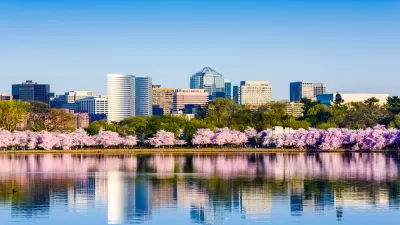A guide to affordable housing definitions and federal housing assistance programs.

A primer by Rory Arnold on the Quicken Loans website outlines the sometimes squishy definitions of affordable housing and how federal, state, and local governments address housing affordability at the policy level.
The article includes the U.S. Department of Housing and Urban Development (HUD)’s definition of affordable housing — housing that costs no more than 30 percent of the household’s gross monthly income including utilities. The standard is intended to leave households with enough income for other necessities.
Affordable housing income limits, dictated by area median income (AMI), are another way government programs allocate assistance. “Affordable housing programs typically are designed to make buying a home more affordable for borrowers with limited income. Your income cannot exceed 80% of the AMI where you live in order to be eligible for many affordable housing programs.” In some cases, the high AMI in an area means that households with the lowest incomes get left out of housing assistance programs.
The article also outlines various federal loan and assistance programs aimed at homebuyers, as well as rental assistance programs such as the Housing Choice Voucher Program, and includes a checklist for finding and applying for affordable housing programs.
FULL STORY: What Is Affordable Housing? A Complete Guide

Study: Maui’s Plan to Convert Vacation Rentals to Long-Term Housing Could Cause Nearly $1 Billion Economic Loss
The plan would reduce visitor accommodation by 25,% resulting in 1,900 jobs lost.

North Texas Transit Leaders Tout Benefits of TOD for Growing Region
At a summit focused on transit-oriented development, policymakers discussed how North Texas’ expanded light rail system can serve as a tool for economic growth.

Why Should We Subsidize Public Transportation?
Many public transit agencies face financial stress due to rising costs, declining fare revenue, and declining subsidies. Transit advocates must provide a strong business case for increasing public transit funding.

How to Make US Trains Faster
Changes to boarding platforms and a switch to electric trains could improve U.S. passenger rail service without the added cost of high-speed rail.

Columbia’s Revitalized ‘Loop’ Is a Hub for Local Entrepreneurs
A focus on small businesses is helping a commercial corridor in Columbia, Missouri thrive.

Invasive Insect Threatens Minnesota’s Ash Forests
The Emerald Ash Borer is a rapidly spreading invasive pest threatening Minnesota’s ash trees, and homeowners are encouraged to plant diverse replacement species, avoid moving ash firewood, and monitor for signs of infestation.
Urban Design for Planners 1: Software Tools
This six-course series explores essential urban design concepts using open source software and equips planners with the tools they need to participate fully in the urban design process.
Planning for Universal Design
Learn the tools for implementing Universal Design in planning regulations.
City of Santa Clarita
Ascent Environmental
Institute for Housing and Urban Development Studies (IHS)
City of Grandview
Harvard GSD Executive Education
Toledo-Lucas County Plan Commissions
Salt Lake City
NYU Wagner Graduate School of Public Service





























